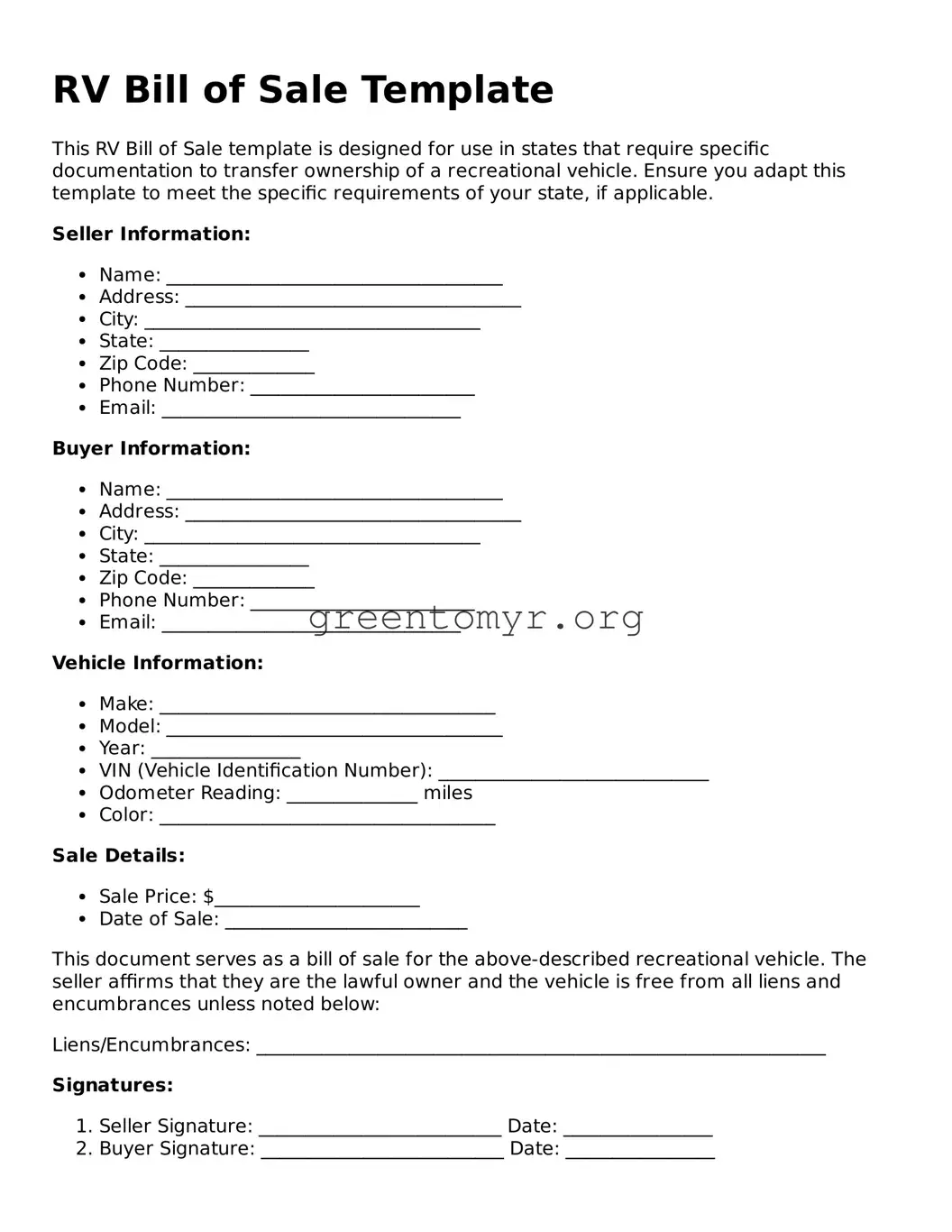Filling out the RV Bill of Sale form can seem straightforward, but many people make common mistakes that can lead to problems down the line. One frequent error is forgetting to include all parties’ names. The seller and buyer should be clearly listed. Omitting a name could complicate the transfer of ownership.
Another common mistake is failing to provide accurate vehicle details. Information such as the RV’s make, model, year, and Vehicle Identification Number (VIN) should be precise. Any inaccuracies can create confusion and legal issues later.
Asking for a signature might seem automatic, but improvements can be made there. Some individuals overlook the need for both buyer and seller to sign the document. Without both signatures, the sale isn't legally binding.
Many people also forget to record the sale date. This information is vital for documentation purposes. Not having a clear sales date can lead to disputes over when the transaction actually took place.
Additionally, people often neglect to include the sale price. This figure is important for tax purposes and helps establish the value of the RV. Failing to list the sale price can result in complications during tax season.
Another misstep is leaving out any relevant conditions of the sale. If there are any issues with the RV that the buyer should know, these should be explicitly noted. This protects both parties and helps manage expectations.
In some cases, individuals forget about payment methods. Clearly stating how the payment will be made—whether via cash, check, or electronic transfer—can prevent misunderstandings and ensure a smooth transaction.
Lastly, many people overlook the importance of keeping a copy of the completed Bill of Sale. Both seller and buyer should retain a signed copy for their records. This document serves as proof of the transaction and can be invaluable if any disputes arise in the future.
